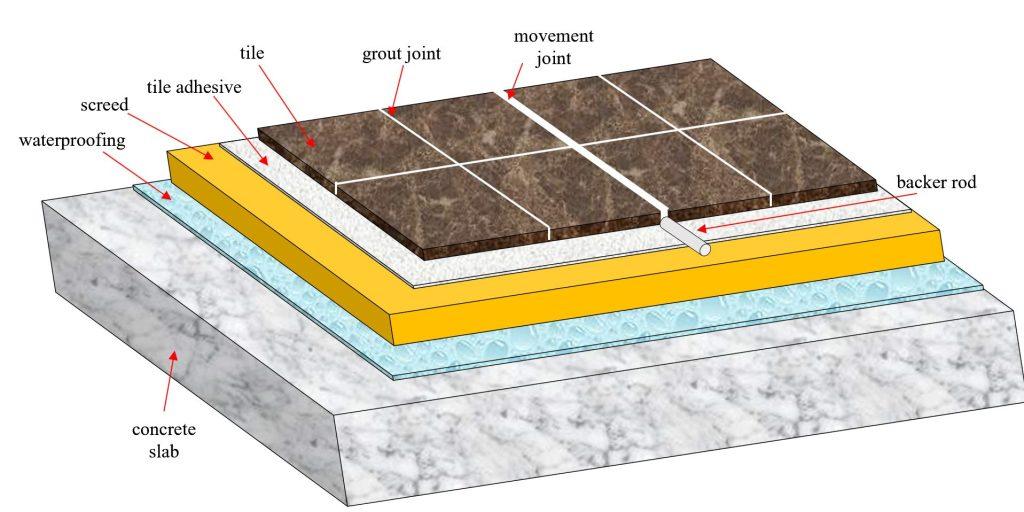Case 3
- Introduction
- Causes of Defects
- Good Practices
- Standards
- Maintenance and Diagnostics
- Remedial
- Similar Cases
- References
Cracking due to Hollowness Behind Tile


Introduction
Type of Building: Public
In this case, hollow unglazed ceramic tiled floor is shown in the picture. Cracks have developed over few tiles. Hollow sounding cracks were detected on the floor. 1 mm thick of waterproofing layer was applied over the concrete floor followed by 50-75mm thick screed and at location where the solid sounding appear, the adhesion bond strength of the layer varied from low 0.06N/mm2 to 0.44N/mm2. This indicates that the mode of failure was either within the waterproofing membrane or adhesion between the waterproofing layer and the concrete layer.
The quality of concrete observed to be sound. In this regard, the distribution of fine and coarse aggregates were even and the amount of air voids and compaction pores were low. Bonding between aggregates and cement paste was found to be good. The amount of microcracks in the concrete were minimal in most of the places. Quality of screed was also found to be good. Only isolated carbonation was found in the screed.
The existing waterproofing (cementitious) consists of five layers. There was a thin and carbonated layer was found over the concrete surface. In addition, it was observed that the micro structure of this layer was different from its real structure. Debonding between these two layers was found and adhesion failure within the layer was also evident.
Moisture content in five layers was found to be different.
The waterproofing layers (second and fourth) were observed to be completely carbonated while carbonation in first layer was confined to the top surface . Debonding was observed between third and fourth layer.
Petrographic examination reviewed that the mix composition was notably different from the manufacturer’s recommendation as the capillary porosity on most of the layers was significantly higher than original sample.
Finally, delamination within the tiling system (tile, tile bed) due to improper installation was also evident. The back of the tile has not been fully bonded with the substrate due to localised absence of the tile bed compound.
